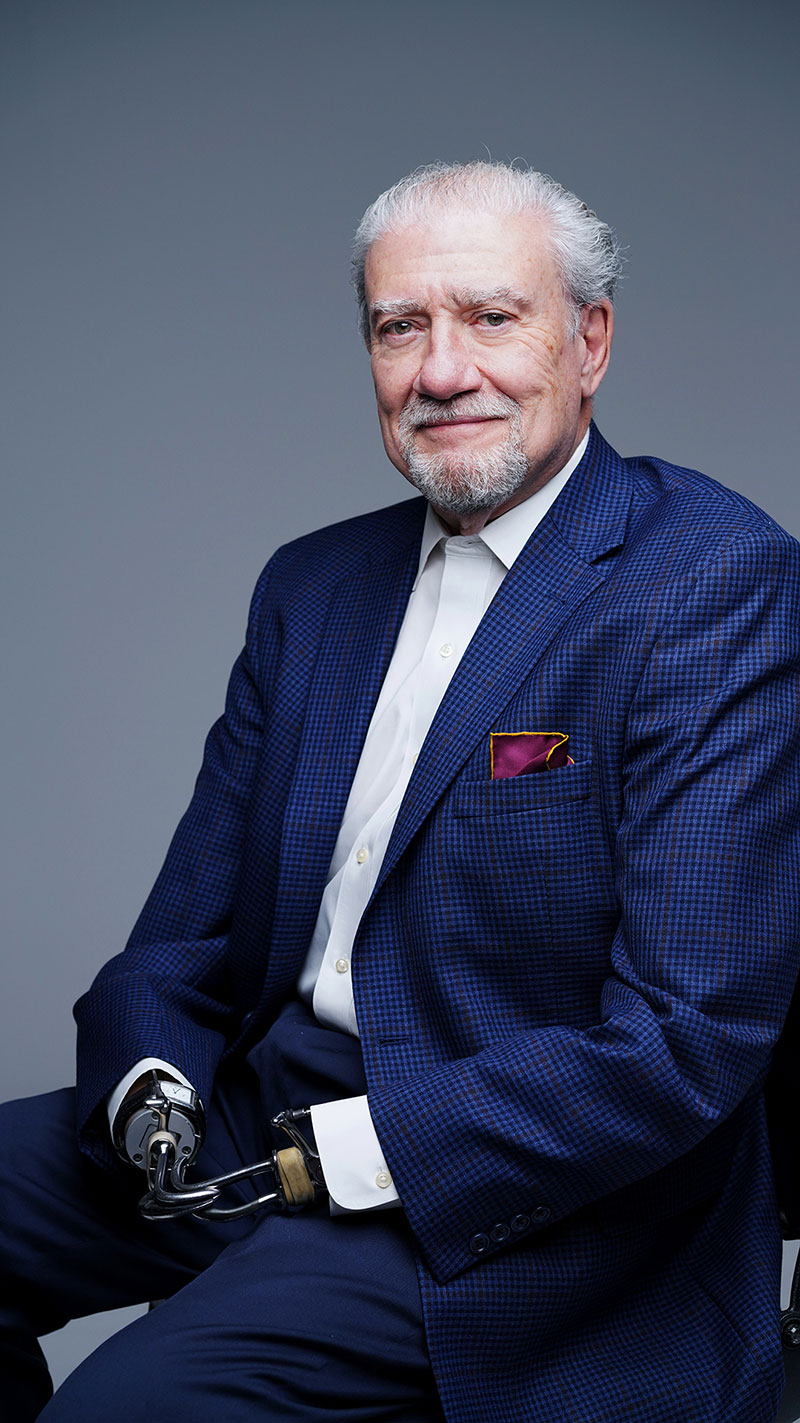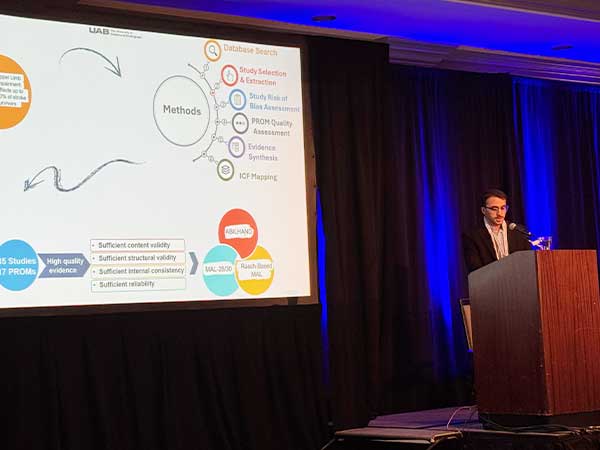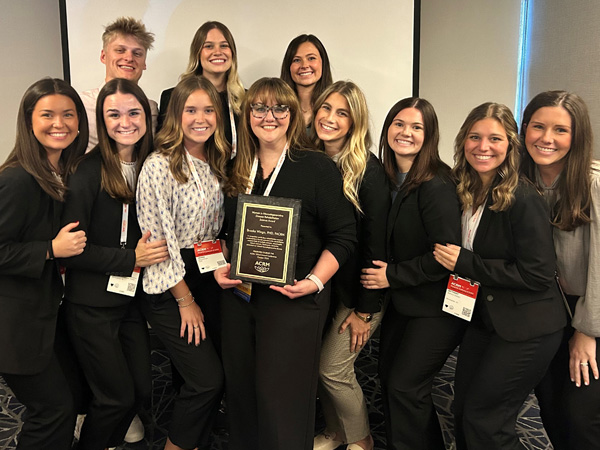 July was named Disability Pride Month to commemorate the Americans with Disabilities Act being signed into law by President George H.W. Bush on July 26, 1990. The ADA made it illegal to discriminate against people with disabilities, forced public buildings to be accessible for all and required employers to provide reasonable accommodations.
July was named Disability Pride Month to commemorate the Americans with Disabilities Act being signed into law by President George H.W. Bush on July 26, 1990. The ADA made it illegal to discriminate against people with disabilities, forced public buildings to be accessible for all and required employers to provide reasonable accommodations.
The Disability Pride Flag, as seen here, was created by Ann Magill after she was frustrated that a 20th anniversary celebration of the ADA was confined to the basement of an independent living center. Green stands for sensory disabilities, blue for emotional and psychiatric, white for invisible and undiagnosed, gold for neurodiversity and red for physical disabilities. Read more about the flag’s meaning here.
In recognition of the Disability Pride Month and the anniversary of the ADA, CEDHARS sat down with Lakeshore President and CEO John Kemp for a Q&A. Kemp, with more than 60 years of disability rights advocacy, played a major role in advancing the landmark legislation.
-
Where did the motivation come from for the ADA?
 Lakeshore President and CEO John Kemp
Lakeshore President and CEO John Kemp
In the early ‘70s, there had been a growing feeling that the disability rights movement needed to take it to the next level because some Supreme Court cases around education had been issued in ’69 that said that children with disabilities were entitled to a free appropriate public education. The FAPE Standard was basically set in two cases. One was Park v. Pennsylvania, and the other was out of the D.C. Circuit Court of Appeals and went to the Supreme Court.
They both held very strongly for the rights of children with disabilities to be included and given all of the benefits of public education. And that fit into the disability rights movement saying, “We've just got to take this further. We're finally getting some recognition that there's a constitutional right to inclusion or equality.” And, the 1973 Rehabilitation Act was introduced in both bodies of the Senate and the house. I even testified before Congressman John Brademas from Indiana and the subcommittee on the handicapped, and that was what it was called then.
We were proposing that there be a Title V added to the Rehabilitation Act. Title I was that the federal government not discriminate in the way it goes about its employment, services and employment opportunities for people with disabilities. Title II was the creation of the Architectural Barriers Act that said any building built with federal monies must be built accessibly for people with disabilities. Section 503, which was profound, created an affirmative duty on the part of any federal contractor to seek out and hire qualified individuals with disabilities, and regulations were promulgated. And then section 504, which is a fundamental piece of legislation, gave us incredible rights. It said anywhere where the flow of federal financial assistance goes, even down through subcontractors to federal contractors, that means state governments, local governments, universities, their subcontractors, hospitals, even financial institutions that were receiving federal money, had to be a non-discrimination requirement under the law. It covered just about everything that we could possibly imagine. The threshold for employment was 15 or more employees. But started the ball rolling, it took about three or four years for our government to finally set it in motion.
This is kind of like the birth of Judy Heumann. Judy was so outraged that the law said when it was signed in September of ’73, the regulations promulgating these pieces of legislation would be completed within 180 day. Four years later, Secretary of Health, Education, and Welfare, which was split into Department of Education and HHS, still hadn't promulgated any regulations implementing 504 at all. And it caused Judy Huemann and a whole bunch of disability rights advocates in San Francisco to occupy the federal building, and the offices of a HEW in 1978 and take it over and not agree to leave until they had said that they would promulgate the regulations.
So, it gave credibility to our movement of diverse people with disabilities and that we also had fundamental civil rights. It was a big step forward. And then, we lost a number of cases in the Supreme Court. The law wasn't as well written as it could have been, but it was all new. And then around came the ADA. And it reached even further, and it said it doesn't have to just be federal financial assistance. It can be anybody. It really started the movement. So, 50 years, from September of this year, we should at least stop and take pause for a minute to say thank you to the disability rights advocates who were working in that area and the Judy Huemann’s and a lot of people for believing that we could be citizens just like everybody else.
-
How did you get involved with the ADA, and what was your role?
I got involved with ADA, and even before that, with the Rehab Act of ’73. I had just finished law school in the fall of ‘73. So, I had testified in Congress for the for the Rehab Act while I was still in law school, and I was a member of the Board of Directors of the National Easter Seals Society, and they asked me to testify.
Then, in 1989-1990, I was involved in the development of the ADA. It actually came out of a report from the National Council on Disability, which did a masterful job from ‘86 to ’89, basically working through and creating a draft piece of civil rights legislation that took the 1973 law and put it into an ADA type of law. Then, from ‘89 to ‘90, they worked on it and introduced it. And there was a great deal of resistance from businesses and entities that didn't want to be regulated. They didn't want to be told about people with disabilities having rights.
Bob Dole played a pivotal role in getting this thing done. It was really, really powerful. I was very much involved in the passage of the ADA. I testified on that before Congress on the ADA as well as the Rehab Act of ‘73. And obviously we worked very hard to be a part of it, and wegot to celebrate it on July 26, 1990, when George H.W. Bush signed it into law.
-
Looking back 33 years since the passage of the ADA, what is the legacy from in both policy standpoint and a meta sense in terms of getting disability policy into the zeitgeist?
Some parts of it are very effective today. Some parts have not been implemented and enforced very well at all. I think that our enforcement provisions have never been respected by the Justice Department and other entities that could be enforcing it. And so the enforcement of ADA remains one of the biggest disappointments. I think that's the only way you ever really get something done is when you create a law and say, “This is the law of the land.” And if people flaunt their noncompliance, and get away with it, they're not harmed. Whereas people with disabilities are harmed terribly when it's not enforced. So enforcement is, is still lacking to this day, and I'm disappointed. And I think we could do a whole lot better.
I think most entities who are covered have done something toward inclusion of people with disabilities, whether it's employment or in the delivery of programs and services. But, they haven't done it nearly enough. If you look just at employment, we only have gone up about 1-2% in the rate of employment in those 33 years since the ADA was passed. That's atrocious.
Here's a little factoid that I think is really critically important. We now have so many great people with disabilities graduate from colleges, and universities, but can't find jobs that we have the largest number of unemployed, well-educated people with disabilities at any time in the history of our country. We've got a bunch of smart people who are unemployed, and they know that they can work. And then we've got all this remote learning and remote working. And we know that work can be done just about anywhere people are unless you're a manual laborer or you have to have personal contact with people. But there are a lot of jobs going wanting, and it's frustrating to me that we just aren't seeing people with disabilities as potential candidates. There are 10 million jobs out there waiting to be filled, and they're not all manual laborers and salespeople and clerks. These are jobs that can be filled by a lot of people with disabilities, and they still don't go after us. They don't come looking for us, and I know we're looking for jobs.
-
In what areas did the legislation leave room for improvement in disability policy, and do you think we’ve been successful in building on the foundation of the ADA?
The ADA intentionally carved out insurance. It carved out portions of transportation, so the Air Carrier Access Act was required to be developed, but we didn't delve into that very far. Now you're seeing people who use wheelchairs wanting to take their wheelchairs on board. Delta has just come out with a prototype that is really exciting, but there will only be one or two spots on a plane, and they got six folks in wheelchairs who want to fly. Somebody's still going to have to transfer to an aisle chair and be carried and lifted into their seat. At least they're starting to talk about it. That prototype won't be available for 5 years.
There are parts of the ADA that were carved out as an accommodation to get it passed. And that was just a bunch of trade-offs. Why 15 or more employees? Why not one? It was because the Chamber of Commerce said you can't mess too much with the small-business person because when they hire somebody, they have to do multiple jobs. There is a rationale to it. I get it. I really do. They need someone who can handle a lot different functions, sometimes physical functions that somebody in, you know, I hate to say wheelchair because less than a million of the 60 million people in this country who have disabilities use wheelchairs, but that's the symbol. It's more symbolic by saying that. But, we can do better, and we should be doing better in employment.
-
Many of those integral in advancing legislation have since passed, such as Judy Heumann most recently. How do we carry on the legacy of the trailblazers before us?
It's a fabulous question. In my analysis of the history of the civil rights movement in recent history, I actually think that after my generation that got us the civil rights laws, kind of disappeared. And I think they thought the work was done, and they didn't have to fight very hard. Everything would be so easy, and it was just a matter of showing up, and everything will be all available to them. And they didn't feel the smack across the face of discrimination as much because they were hopeful that any day now things will be better. So, there wasn't this second generation from the passage of the ADA, say the 30 year olds today.
Maria Towne who's running AAPD, and Claudia Gordon and a whole bunch of really savvy folks who are in that age span are really picking it up. Dom Kelly, in Atlanta, extraordinary guy, is another. They're picking it up, and they're really making something happen now. There’s starting to be these regional and national movements again, and the Center for Independent Living, which have been a real integral part of the movement, really need to be lifted up more and more. They are rising in terms of their power. But it's coming back, but it skipped a generation.
I'm still looking for more Tammy Duckworth’s in Congress. I think it's a political game, in part. And it's how much power. When you think about the diversity of disability from people on the spectrum, autism to people who are blind or have sensory disabilities to amputees and people with spinal cord injuries, it's where it's very diverse within our disability population. Finding the unifying voices, and the themes, such as employment and access to health care and access to transportation, those are universal issues that everyone should be able to rally around and more can be done in this area. I think this next generation is really coming on strong, and I think they're going to be great.
-
What does Disability Pride Month mean to you?
Well, I'm one of those folks with disabilities who has an apparent disability. I'm really proud guy of my disability. I am very proud that I have a disability. It has shaped my whole life. It has given me a reason for work and advocacy. I feel like I need to help as many people as possible without disabilities understand that we can participate fully in society. To whatever extent they think that I'm a good role model, I accept it. I kind of blush most of the time when they say that to me, but I just want all of us to be out in the community and people seeing us doing everyday things. Like, it's not a big deal for us to go to the grocery store or to go buy a shirt or whatever it might be.
We're not there yet. And life's too hard for a lot of people with disabilities. Transportation in Birmingham, for example, is really difficult. Who schedules a trip a day in advance for a demand-response van to come and pick them up and take them to a medical appointment? I mean, most of us decide we're going to go someplace in 20 minutes or that morning, and we're going to make a stop at such and such place. It's ludicrous to think that we just don't have the ease and comfort that other people without disabilities. When I talk about proud, I am proud of who I am. But, I know it's my responsibility to really get going.

